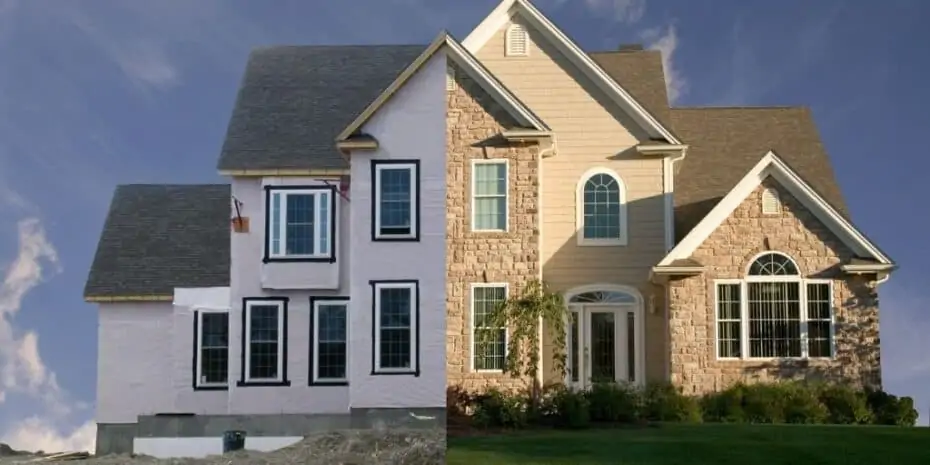Fix-and-Flip Definition
How Does the "Fix-and-Flip" Strategy Work?

A real estate investor who fix-and-flips as their primary investment strategy is known as a house flipper.
House flippers usually buy houses at a discounted price on an “as-is” basis. A property bought “as-is” means the seller will not address any issues regarding its physical condition; this often means the property is distressed, although not always[1].
House flippers use a number of methods to acquire properties that meet their investment criteria. These include bidding at delinquent tax auctions, buying through real estate wholesalers, sending out direct mail, working with investor-friendly agents, and more.
Once they acquire a property, a house flipper will begin the renovation process. Most house flippers will hire contractors to complete the work as needed, but some will do it themselves to cut costs.
After finishing the necessary repairs, house flippers will put the property up for sale.
Why Would Homeowners Sell to Flippers?
House flippers typically purchase property from motivated sellers—people who are willing to sell their property below market value due to some source of pressure like financial hardship or illness.
One of the most common sources of motivation is owning a distressed property, or a property that has a lot of deferred maintenance, physical damage, and/or clutter. These properties are often in such disrepair that conventional buyers (also referred to as retail buyers) have no interest in purchasing them.
An owner of a distressed property will struggle to sell unless they go through the process of renovating a property to a standard that is suitable for the market.
Other factors can also motivate an owner to sell their property to a flipper. Below are some of the most common.
1. Turning an Unwanted Asset Into Cash Quickly
Houses are not liquid assets, so converting them into actual money can be a difficult process. Working with a house flipper makes this process relatively easy and straightforward.
2. Avoiding Home Improvement Expenses
Not all sellers have the financial means or knowledge to repair a distressed property. For some, any notion of a construction or renovation project can be overwhelming. When a seller works with a house flipper, they can avoid this stress and may even make some money in the process.
3. Cutting Losses
An increased risk of foreclosure is one of the many dangers of underwater mortgages[2]. Pursuing a short sale with a house flipper is a less financially destructive way to shield oneself from the negatives of defaulting[3].
4. Alleviating the Pain of Negative Life Circumstances
The most common reason a seller chooses to work with a house flipper is to alleviate some form of pain, suffering, or crisis. Whether debt, hospital bills, divorce, or the death of a loved one, most of life’s major problems come with added financial expense and pressure.
When a person in crisis owns a piece of real estate, selling it to a house flipper gives them a quick source of cash they can use to address their negative life circumstances.
How to Finance a Fix-and-Flip
House flippers can explore different avenues to obtain the necessary funds to purchase and renovate properties.
When house flippers do not have sufficient cash reserves to finance their investment projects, they can turn to any of the following:
Private Lenders
New house flippers often seek financial support from family and friends. Some other individuals may also invest, but they are less inclined to lend money to house flippers with little to no experience as a house flipper.
Traditional Lenders
Banks are generally conservative and have no loan products specifically made for house flippers.
Other financial products, however, such as credit cards, business lines of credit, and equity lines of credit are common forms of leverage used by house flippers to harness the power of other people’s money.
Hard Money Lenders
These lenders offer loans to real estate investors[4]. Although they charge higher interest than traditional financial institutions, they are much more flexible than traditional lenders and typically finance the renovation in addition to the cost of purchasing a property.
RELATED: Hard Money 101: Everything You Need To Know About Getting Started With Hard Money Loans
The “70% Rule” in Flipping
This is a rule of thumb that suggests a house flipper should not pay anything more than 70% of the after-repair value (ARV) of a property minus the cost of improvements needed.
Say a house’s after-repair value is $160,000; 70% of this value is $112,000. If the cost of repairs is $35,000, then $77,000 would be the highest amount an investor should pay to acquire the property.
$160,000 x 0.70 = $112,000
$77,000 + $35,000 = $112,000
The 70% rule can be helpful when determining whether the numbers in a deal will work. However, many experienced house flippers deviate from this rule and will assess a project’s profit potential without rigidly sticking to this rule of thumb.
Note that the “70% Rule” does not factor in all costs involved in flipping a house. Some of these include loan interest, property taxes, insurance, and utilities.
Pros and Cons of a Fix-and-Flip
House flipping can be lucrative, but it is not a guaranteed path to profitability. Below are the pros and cons of house flipping.
Pros
- Faster Return on Investment – Flipping houses can be an effective way to use real estate to make a profit quickly while using financial leverage to finance the acquisition and improvement of the asset.
- No Long-Term Property Maintenance – Once sold, the property becomes the obligation of its new owner. The house flipper is no longer responsible for its upkeep, which can be costly for a buy-and-hold investor.
Cons
- Underestimated Expenditure – Repair issues that do not get discovered before the start of construction can result in unexpected expenses. House flippers who fail to prepare for contingencies make themselves liable to potential losses.
- Market-Driven Profit Potential – The idea behind the profit potential of house flipping is based on the assumption that improvements will raise the value of a property. Although such an expectation is not unfounded, it is still speculative in nature.
- More Taxes – House flippers are usually subject to higher tax rates[5] compared to other types of real estate investing.
Takeaways
Fix-and-flip is a form of real estate investing. It is about buying a distressed property, renovating it to raise its value, and then selling it at profit. These real estate investors assess the profit potential of property sold at a discount from motivated sellers using factors such as the 70% Rule and the after-repair value (ARV).
Sources
- Quicken Loans. (2021.) What You Need to Know Before Buying a Home “As-Is”. Retrieved from https://www.quickenloans.com/learn/need-know-buying-home
- Loftsgordon, A. (2021.) What’s an Underwater Mortgage? Nolo. Retrieved from https://www.nolo.com/legal-encyclopedia/what-is-underwater-mortgage.html
- Cunningham, M. (2020.) 10 Benefits of Short Sale over Foreclosure. HowStuffWorks. Retrieved from https://home.howstuffworks.com/real-estate/selling-home/10-benefits-of-short-sale-over-foreclosure.htm
- Mint. (2020.) What is a Hard Money Loan & How Do They Work? Retrieved from https://mint.intuit.com/blog/housing/what-is-hard-money-loan/
- Ivy, M. (2019.) Flipping Houses Taxes: Capital Gains vs Ordinary Income. Fit Small Business. Retrieved from https://fitsmallbusiness.com/taxes-on-flipping-houses/






